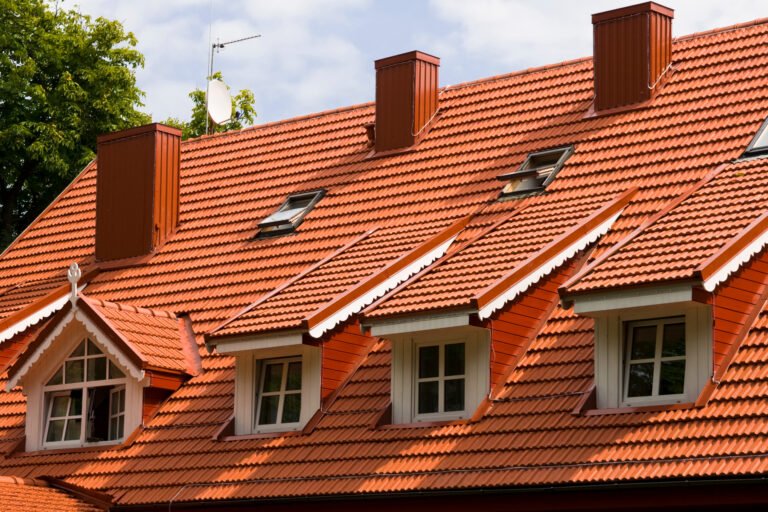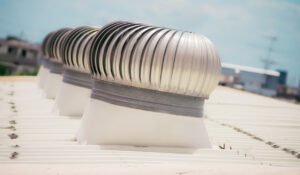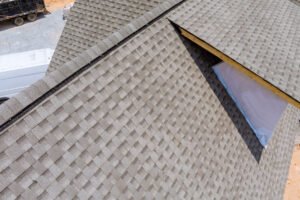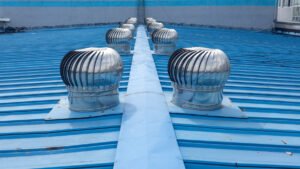Roof vents are the best tool to manage airflow and circulation and balance the temperature and moisture in your attic. But, the same type of roof vent won’t suit different attic sizes and finishes and might fall short of proper intake and exhaust.
So, what’s the solution? Well, you can use different types of roof vents for diverse climates and attics and clad them later for better performance. Today, we’ll discuss the working of popular roof vent types and help you pick the best venting system for your attic.
Key Takeaways
- There are 9 different types of roof vents based on the climate, ventilation speed, and airflow in your attic. We’ve explained the functions of each type below!
- You can use naturally-powered Whirly bird or Static roof vents to cut your energy use and provide optimal ventilation.
- Dormer or Cupola vents boost the curb appeal and increase the resale value of your house. But this isn’t it; we’ve explained many other pros and cons below.
- Intake vents like gable and soffit vents need to be balanced with other exhaust vents for better heat control.
So, if you want to multiply your ventilation and ensure a moisture-free attic, continue reading!
Popular Types of Roof Vents for Better Attic Ventilation:
Roof vents vary according to airflow, exhaust speed, and pressure and suit various attics based on size and shape. For example, while ridge vents are more concealed and smooth, whirl air vents are pretty bulbous and adapt with larger attics.
So, let’s analyze some more roof vent types and select the best attic venting for you.
1. Whirly Bird or Wind Roof Turbines
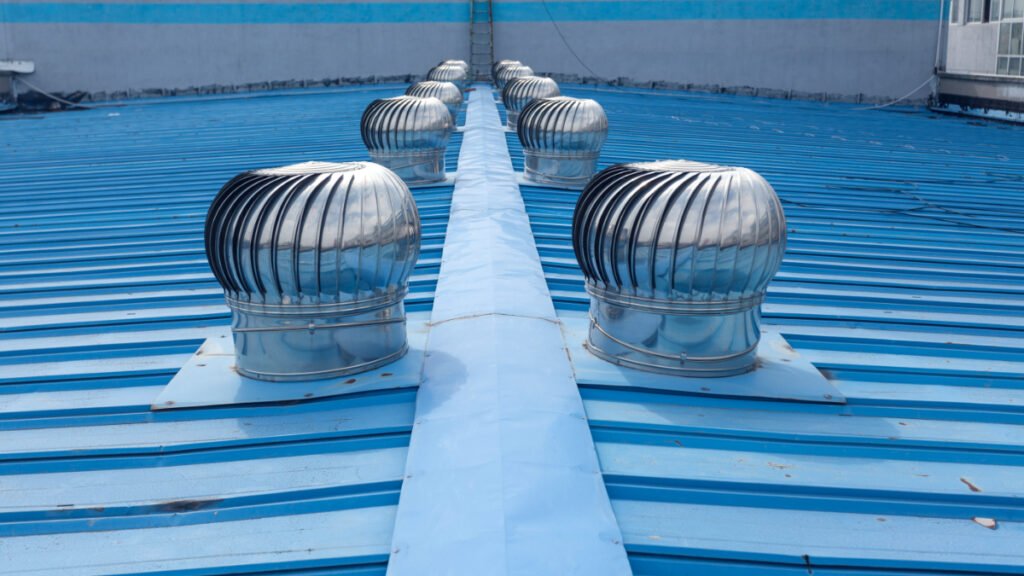
What Is It: Whirlybird or roof turbines are large, wind-driven, bulbous vents on the roof apex. They have thicker base plates and curvilinear openings that spin with the wind and expel all the hot air from the system.
How Does It Work: Roof turbines reduce the pressure at the center of the turbine, absorb all the hot air and release it outside. And they also supply air to the attic. So, they are a type of both intake and exhaust vents within the same model.
Roof turbines are high-speed wind fans. So, needless to say, they depend entirely on wind speed, direction, and flow and work well in windy areas. But, you can still add some lead batteries and increase their output in dry areas.
Roof turbines are also very affordable to purchase and install. They dry up quickly and need frequent lubrication, but you can use heavy-duty ball-bearing and WD-40 lubes to boost their performance quickly.
However, roof turbines are very sensitive and might break in heavy storms or rain. So, don’t forget to install a vent cap. Or, you can lower their fan speed and combine them with other ventilation systems to enhance their performance.
| Average Cost | $2000 – 3000 per piece |
| Preferred Roof Style | Flat, Shed, Gable or Gambrel Roof |
| Preferred Attic Style | Trussed, Garage or Scuttle Attic |
Pros:
- Cheap and Easy to Install
- Space-efficient
- Popular and Easy to Purchase
- High inlet and exhaust speed
Cons:
- Nead high wind speed for better function
- Might crash and tear down from the roof
- Doesn’t work in dry climates
- Noisy
Add caulk or weatherstripping to create a tight air seal around the roof turbines and prevent them from leaking with prolonged use.
2. Static or Solar Powered Vents
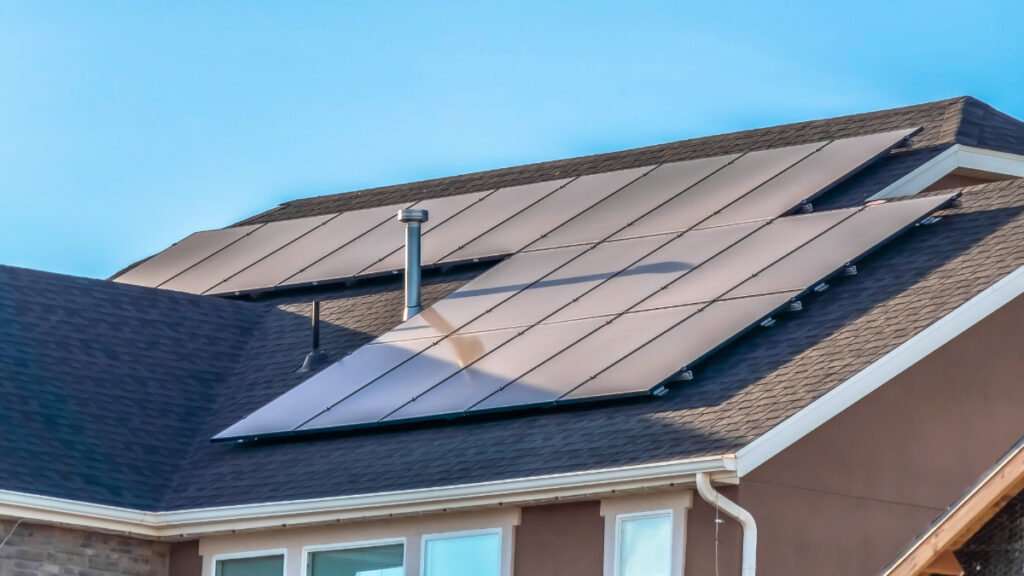
What Is It: Static or solar-powered vents are flat, squarish, or circular discs on the roof sides. These are directly connected to different solar panels and have a slightly sloping edge to maximize sun exposure.
How Does It Work: Static vents have temperature-sensitive fans that start blowing above a fixed temperature and draw out all the hot air from the exhaust. This creates a negative pressure in the attic and allows cold air to seep in.
Static vents work on a thermometer-controlled mechanism to manage the exhaust speed. So, they speed up the circulation time and lead to less heat and moisture in the attic.
Static vents operate on solar panels and sunlight directly. So, they might not work in poorly-light or cloudy areas. And since the amount of sunlight varies per season, they might deliver limited output during the rains and winter.
However, static vents have a limited exhaust speed that varies with the solar panel and motor size. But, since they are easier to install, you can quickly increase the total number of vents to boost the total exhaust speed.
| Average Cost | $1500 – 2000 per piece |
| Preferred Roof Style | Hip, Shed, Pitched or Gable roof |
| Preferred Attic Style | Smaller Scuttle attics, Unfinished attic or Vented attic |
Pros:
- Energy-efficient and Solar powered
- Cheaper and Easy to Install
- High circulation speed
- Reduces mildew and moisture-buildup
- Quieter operations and no operating costs
Cons:
- Can’t function in monsoons
- Might not work well in temperate or snowy areas
- Low exhaust and intake speed
- Need to be combined with different vents in larger attics
Add a meshed cap or fabric to prevent birds and pests from entering the static vents and nesting there.
3. Dormer Vents

What Is It: Dormer vents are round, vault-like vents with meshed screens and rounded edges that fit along pitched roof sides and apexes.
How Does It Work: A dormer vent is a type of exhaust vent with a funnel-like structure that absorbs the internal air and releases it outside. And it has some louvers and meshes that control the moisture and keep the pests away.
Dormer vents are sturdier metal or aluminum vents with an arch-like exhaust that forces hot air out of the system. Thus, they offer better climate control and high exhaust speed than most vents. Plus, they circulate fresh air and reduce the overall water damage inside.
Moreover, dormer vents can be easily painted to match the roof color. So, they are a great choice if you have some strict vent color codes in your area or have heavy rainfall that might rust the vents easily.
Dormer vents are classified into three types based on their shapes and roof styles:
- Flat-roof Dormer: It is like a low-raised arch with a smaller exhaust opening that fits onto flat and low-sloped roofs.
- Shed Dormer: It has a single-sided slope that fits onto typical shed roofs and allows a wider arch opening for more exhaust.
- Hipped Dormer: A hipped dormer has a high vault-like appearance with three sloping sides that fit onto sloping and pitched roofs.
| Average Cost | $500 – 800 per piece |
| Preferred Roof Style | Hip, Shed, Pitched or Flat roof |
| Preferred Attic Style | Wall-height, Unvented or Fully-finished attics |
Pros:
- Can be painted to match the roofing
- Easy to Install, Repair, and Maintain
- High air-circulation and exhaust speed
- Keeps the pests and birds away
Cons:
- Might crack or warp with rain
- Smaller in size
- Moderately noisy
Place your dormer windows at the lower edge of the roof for a bigger exhaust opening and arch size.
4. Ridge Vents
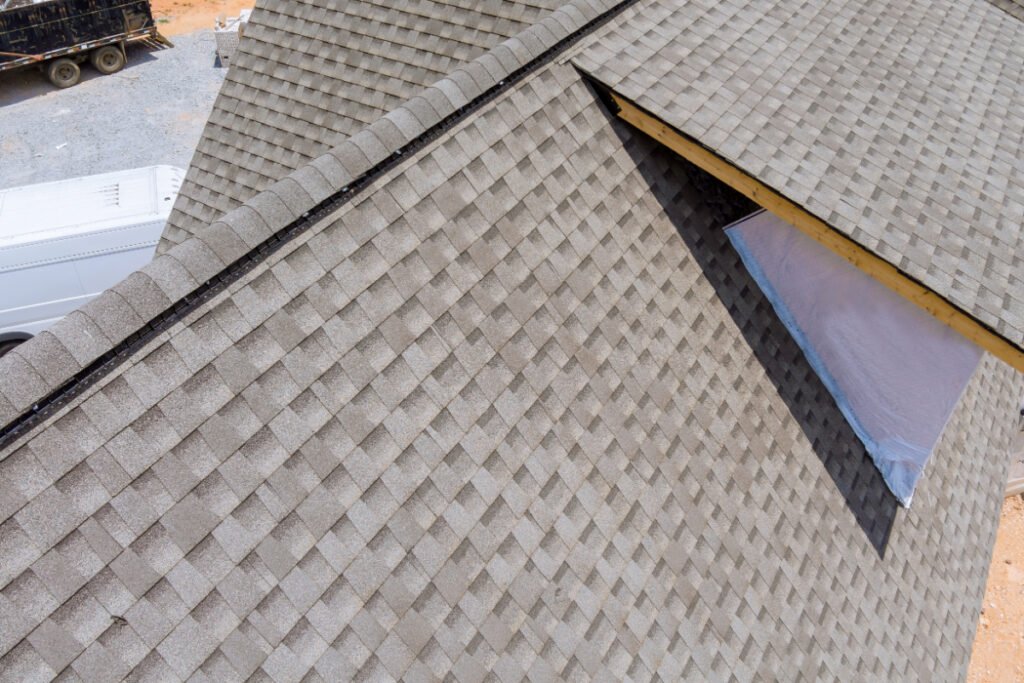
What Is It: Ridge vents are a type of slit vent at the roof apex. These usually sit between/over the roof gaps and offer a continuous exhaust along the entire roof’s length.
How Does It Work: Ridge vents work on a negative pressure effect that raises and pushes hot air out from the main vent and pulls cold air inside through smaller inlet pipes at the sides.
A ridge vent is used along the entire roof line. So, it doesn’t break the curb appeal of your house, unlike most other vents, and, in fact, can be clad to match the roof style.
Generally, these vents use natural convection currents to force exhaust out of a system. Thus, they do not require any energy source and work equally well in different climates. Plus, they offer constant fresh air, maintaining the proper attic temperature.
However, ridge vents cannot ventilate the entire attic on their own and need to be combined with different soffit and gable vents for better air circulation. Thus, their performance depends on the intake vents and can vary with the regions.
And they are equally tedious to install and repair and might hike your maintenance costs in the long run. But are ridge vents better than traditional roof vents? You can check it out here!
| Average Cost | $1000 – 2000 depending on the roof line |
| Preferred Roof Style | Pitched, Gable and Hipped roofs or Shingle roofs |
| Preferred Attic Style | Larger Garage, Fully finished and Truss attics |
Pros:
- Lowers the attic temperature and humidity
- Compact and Completely concealed
- Keeps the pests, birds, and insects away
- Doesn’t require additional vent stacks
Cons:
- Might leak with heavy rain
- Cannot work with flat or low-sloped roofs
- Needs additional intake vents for air circulation
- Might fail with hail and heavy snow
Periodically clean your ridge vents with a high-pressure air jet or hose to remove all the clogged dust and debris and restore the airflow.
5. Gable Vents
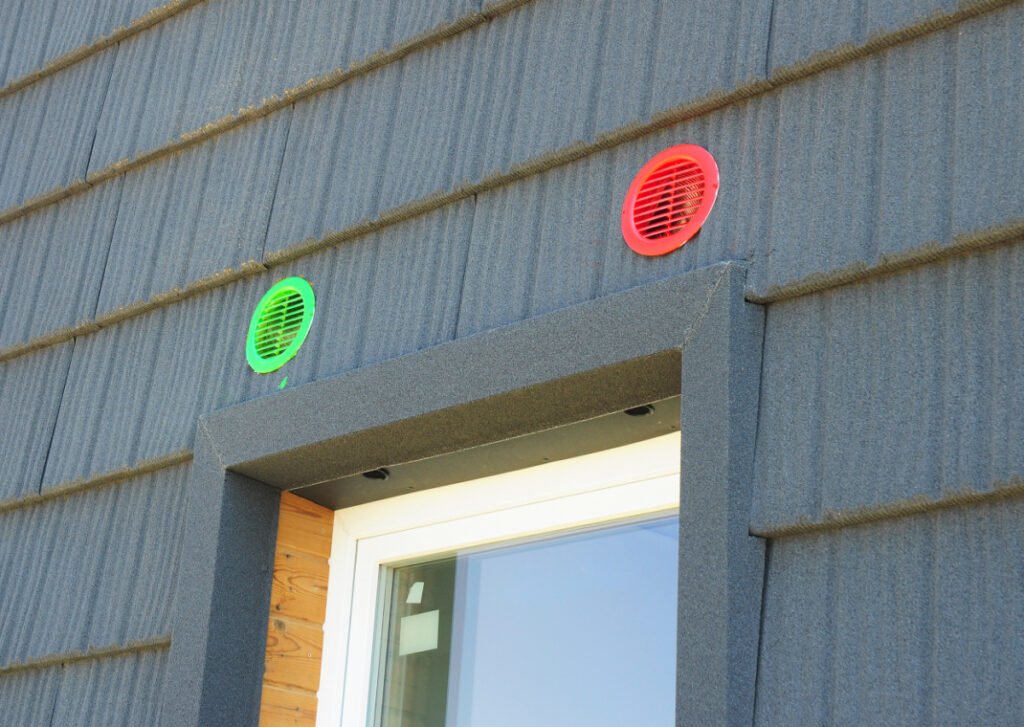
What Is It: Gable vents are circular or squarish intake vents with louvered or meshed openings along the gable or exterior wall of the house.
How Does It Work: Gable vents usually create a pressure difference along the internal and external sides of the attic. Thus, they draw more air from the opening and circulate it within the attic.
Gable vents are small, geometric windows with a weatherstrip along the exterior walls. So, they are well-protected from moisture and humidity and do not need additional insulation or vapor barriers to function well.
However, they do not expel heat from your system on their own and need different box or exhaust vents. But, they do circulate more air into the space and keep your attic free from moisture and mildew.
Similarly, gable vents protect the rafters and joists from fungi and extend their durability. So, they might as well save your shingles and roofing from water damage. And since they have louvered openings, they help keep the pests and critters away too!
| Average Cost | $150 – 200 depending on the wall height |
| Preferred Roof Style | Gable and Pitched roofs |
| Preferred Attic Style | Small Scuttle, Unfinished and Trussed Attics |
Pros:
- Protects from moisture and pests
- Reduces mildew attack
- Easy to Install and Repair
- Affordable and Compact
Cons:
- Need additional exhaust vents for better performance
- Cannot work with flat roofs
- Might leak with heavy rain
- Might fall short of air supply in larger attics
Clean and dust the gables regularly to remove all the debris and nesting materials and enhance the airflow.
6. Soffit Vents
What Is It: Soffit vents are small intake vents along the eaves or roof overhangs of the house, with additional inlet pipes that supply fresh air to the attic.
How Does It Work: A soffit vent curates a continuous flow of air from the attic floor to the roof and circulates fresh air within the system. Simultaneously, it pushes hot air out of the system and maintains a balance between intake and exhaust.
Soffit vents are low-rise Aluminum or PVC vents that supply fresh air to the attic. Thus, they reduce air conditioning and drastically lower energy consumption. And since they offer little exhaust, they pair well with smaller ridge vents or roof turbines too.
Additionally, these vents eliminate condensation and overheating in your attics. So, they prevent black mold, fungi, and mildew and keep your shingles and roofs in good shape. Plus, they reduce the warping of your joists and increase their strength.
In contrast, soffit vents can suck in humidity or dewdrops in tropical regions and might disrupt the attic’s insulation and walls. So, using these vents in drier areas or adding a dehumidifier is advisable.
And soffit vents are further divided into three types as follows:
- Individual: It is a long, slit vent with mesh covers between the joist and eaves.
- Continuous: It is a channel vent along the roof line to maximize the airflow.
- Perforated: It is a meshed soffit vent with vinyl sides and small holes to keep the animals out.
| Average Cost | $300 – 350 per vent |
| Preferred Roof Style | Flat, Hip, Gable, Shed or Skillion roof |
| Preferred Attic Style | Unvented, Partially finished or Texas basement attics |
Pros:
- Reduces energy consumption and air-conditioning costs
- Boosts the durability of the trusses and shingles
- Reduces mold and fungi
Cons:
- Susceptible to animals and pests
- Might draw more humidity to the attic
- Tedious to Install and Maintain
Soffit vents might build up moisture if left unbalanced by exhaust vents. So, don’t forget to combine them with ridge or box vents for better ventilation.
7. Hardwired Vents
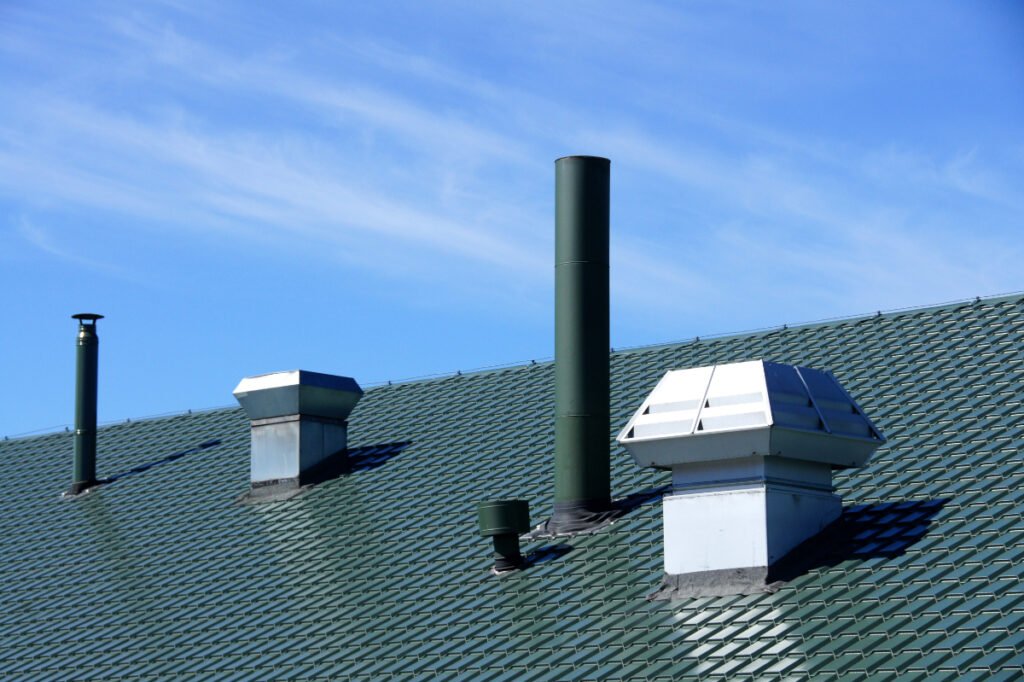
What Is It: Hardwired vents are simple box-shaped vents with an attic fan or blower at the higher end and small inlet pipes to let in air from the lower end.
How Does It Work: Hardwired vents operate through a humidistat and a motor-controlled fan that lets out all the moisture from the attic, creates a pressure difference and thus, lets in fresh air into the space.
Hardwired vents are a combination of electrically-operated inlet and exhaust vents on the apex of the roof. They do have batteries to work during electrical outages but hike up the energy use and costs considerably.
But, they have a high exhaust speed and can be used to ventilate larger attics effectively. Similarly, they ensure that the vent openings remain free from moisture and pests. So, they keep the attics dry and improve the roof’s lifespan.
However, hardwired vents are noisy and vibrating. So, you might need to add thicker foam insulation to protect the living spaces from all its vibrations. Or, you can add a greasing liquid and control the noise yourself.
| Average Cost | $1000 – 1200 per vent |
| Preferred Roof Style | Flat, Pitched, Shed or Skillion roof |
| Preferred Attic Style | Larger finished or garage attics or basement attics |
Pros:
- High exhaust speed
- Excellent air circulation and wider coverage
- Durable and long-lasting
- Reduces moisture and pests
Cons:
- High energy or electricity use
- Tedious to install and repair
- Noisy
Lubricate the wired vents with Vaseline, WD-40 or a Silicone spray for better function and exhaust. Or, spray some dish-soap or grease to reduce the friction.
8. Box Vents
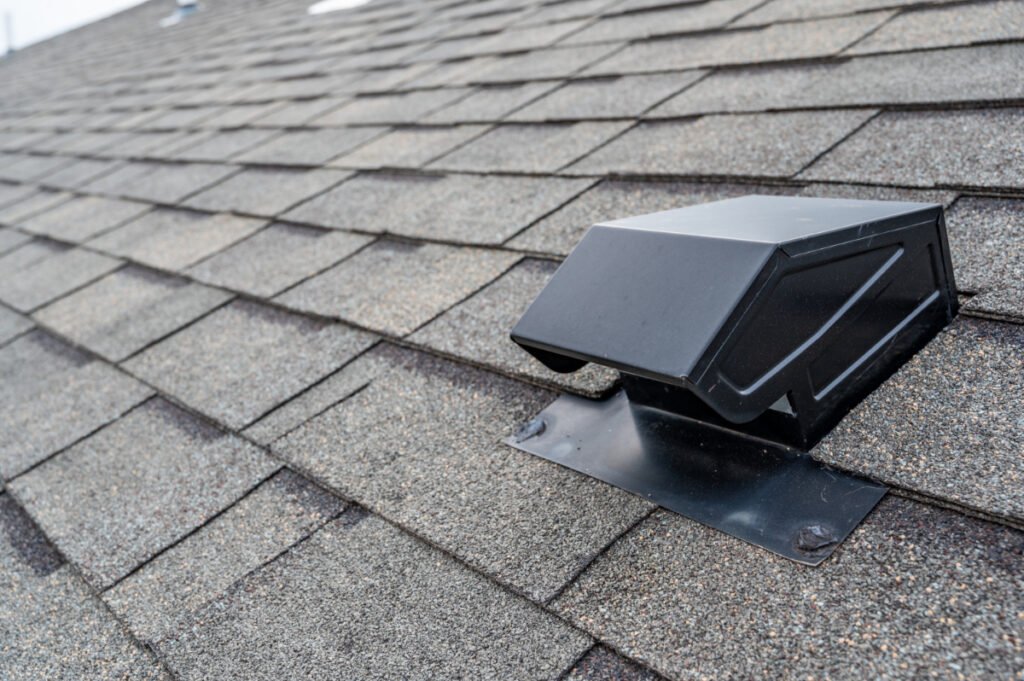
What Is It: Box vents are mechanically-powered, cubicles vents that protrude along the roof’s apex or ridge and let out the hot air from the system.
How Does It Work: Box vents have a large ventilation hole in the middle that sucks all the heat and moisture from the attic and lets it out into the surrounding air. And it may also have some wind-powered fans that boost the exhaust and blow fresh air into the attic.
Box vents are installed on the roof’s highest point. Thus, they catch all the rising hot air and ensure unrestricted airflow, keeping the attic and joists dry. They also eliminate all the excess moisture and save the attic from water damage.
Additionally, they are pretty compact and easy to install. So, you can mount more vents to increase the ventilation and even interlink them for better moisture control. You can even paint and clad them to suit your roofing style!
However, these are pretty brittle and can damage with heavy rain. But, you can install a vent cap or add a vapor barrier for protection. Or, you can rinse them with anti-rust solutions and seal them in enamel to remove the rust.
| Average Cost | $400 – 500 per vent |
| Preferred Roof Style | Flat, Pitched, Gable, Hipped or Skillion |
| Preferred Attic Style | Smaller Unfinished or Scuttle attics |
Pros:
- Flexible; Can be placed anywhere
- Easy to Install and Maintain
- Can work with complex roof-shapes
- Paintable, and Customizable
- Less energy use
Cons:
- Susceptible to cracks and damage
- Might rust easily
- Noisy
- Can leak and suffer from fungi
Change the box vent’s filters once a year or wash and brush them with abrasive cleaners to boost the airflow.
9. Cupola Vents

What Is It: Cupola vents are large vent stacks or towers with side openings and a domical or pyramidal roof that expels hot air from the system.
How Does It Work: Cupola vents work on a passive-stack system that raises hot air and discharges it from the top end of its tower. And the side windows let in fresh air simultaneously and maintain the proper airflow.
Looking like towering spirals along the roof sides, Cupola vents serve as interesting aesthetic elements. You can use them for smaller attics in combination with other ridge or box vents as they might not function as well as other exhaust systems.
These vents have lower thermal and moisture control but supply a lot of fresh air to the attic. So, they can be used as intake vents in drier and even-climate regions. Or, you can add a vapor barrier and insulate them for better temperature control.
However, cupola vents are incredibly costly and difficult to install and maintain. So, you might as well need a professional installation to save the double work!
| Average Cost | $2000 – 3000 per vent |
| Preferred Roof Style | Pitched, Gable, Hipped or Shed |
| Preferred Attic Style | Smaller Trussed or Drywall attics |
Pros:
- Spanish or Mediterranean curb appeal
- Boosts the home resale value
- Provides a continuous supply of fresh air
Cons:
- Expensive
- Difficult to Install and Maintain
- Susceptible to fungi and mold
- Weak temperature and humidity control
Add a metal flashing around the edge of the cupola vent for better moisture control and fungi resistance.
Comparing the Most Popular Types of Roof Vents
| Parameter | Roof Turbine | Static Vent | Dormer Vent | Ridge Vents | Gable Vents | Soffit Vents | Hardwired Vents | Box Vents | Cupola Vents |
| Venting | Intake & Exhaust | Exhaust | Exhaust | Exhaust | Intake | Intake | Exhaust | Exhaust | Intake & Exhaust |
| Mechanism | Wind | Solar | Mechanical Ventilation | Convection Current | Pressure Difference | Pressure Difference | Electricity | Passive Airflow | Convection Current |
| Shape | Bulbous | Flat / Disc | Vault | Strip | Flat | Flat | Flat | Cubical | Tower |
| Climate | Tropical & Windy | Sunny & Tropical | Even & Rainy | Snowy & Tropical | Tropical & Windy | Dry | Tropical & Temperate | Dry to Low rain | Dry |
| Cost | Moderate | Low | Low | High | Low | Low | High | Low | High |
| Ease of Installation | Easy | Easy | Easy | Difficult | Easy | Difficult | Moderate | Easy | Difficult |
| Roof Style | Flat / Shed | Hip / Gable | Flat / Pitched | Hip / Pitched | Gable | Flat / Overhang | Flat / Pitched | Flat / Skillion | Pitched |
| Coverage | Small to Moderate | Small | Moderate | Large | Moderate | Moderate | Wide | Moderate | Small |
What Is a Roof Vent & Why Is It Necessary?
Roof vents are small pipe or domical windows that sit above the attic insulation and supply fresh air to the space. They do so by taking in surrounding air from the inlet slots, circulating it within the space, and forcing hot air out of the attic.
So, roof vents are essential to ensure optimal airflow, temperature, and humidity in hot and dry regions. Similarly, they prevent water percolation around the joists and rafters and keep the mold and pests away.
And roof vents are also imperative for the various benefits as follows:
- To balance the temperature and keep the attics cool and dry.
- To melt the roof snow and reduce dampening.
- Curtail the mold and mildew growth.
- Save the plumbing vents and traps from corrosion.
- Get rid of the foul and rusty attic smell.
Tips for Picking the Best Roof Vent for Your Attic

- Pick concealed Ridge vents for a modern roof, Cupola vents for a Mediterranean or Spanish roof, and traditional box vents for a rustic exterior.
- Consider the climate; Choose roof turbines for windy areas and soffit vents for drier climates.
- Use dormer or ridge vents for better moisture control in high rainfall areas.
- Select static or cupola vents for smaller attics, but pick dormer or hard-wired vents for larger attics.
- Use solar or wind-powered turbines to save energy costs drastically.
Which Is Better – Plastic or Metal Roof Vents?
Plastic vents are cheaper and lightweight, whereas metal roof vents are sturdy but corrosive. So, plastic vents are the best for small-sized attics in rainy or tropical climates, whereas metal roof vents are better for larger attics in dry and temperate areas.
When Should a Whole House Vent Be Used?
Whole house vents should be used when the temperature goes below 70 degrees or when the sun sets. You can even use it for optimal temperature control during snowy or high-rainfall days.
How Long Do Roof Vent Caps Last?
Roof vent caps last for about 10-15 years, depending on the material. Generally, metal and aluminum caps last for 12-15 years, but plastic ones might start weathering after 7 – 8 years.
Do You Need an Attic Fan with a Ridge Vent?
Yes, you might need an attic fan if you don’t use any other ventilation system with your ridge vent. In contrast, you can skip the attic fan if you have soffit or gable intake vents on the exterior walls.
Where Should You Place the Roof Vents?
You should mount exhaust vents at the higher parts of the roof – the gable and the apex, whereas you can install inlet vents at the lower portions of the soffits and the external walls.
Roof vents maintain ideal temperature and humidity and keep attics dry. You can choose the best vent per your attic size, climate, and airflow rate. Pick high-performance roof turbines or box vents for larger attics while choosing cupola or gable vents for smaller ones.
Additionally, you must consider the right roof vent numbers to maintain proper air circulation in your space and save your attic from excess moisture buildup. But how many roof vents does your attic need? Well, don’t get confused, and hop on to our article to know more.

